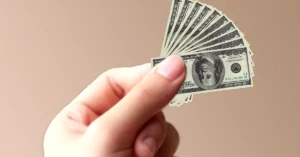If you’ve opened a familiar snack lately and thought, “This feels… smaller?” — you’re not imagining things. It’s called shrinkflation, and it’s one of the sneakiest ways companies are quietly charging you more for less.
And it hit me right in the taste buds last Saturday.
After lunch, I reached for a few Oreos — a quick, nostalgic treat. I’ve got a method: twist, split, eat the lighter-frosted half first, then savor the frosting-heavy side. Sometimes I even make my own “ultra-double-stuffed” by pressing two creamy halves together. (Yes, even with Double Stuf — it’s a vibe.)
But this time, something was off. The frosting was thin — like really thin. I looked down at the cookie, and the spread was about the size of a quarter. Could it just be a fluke? Maybe a production error?
Just a few days earlier, my daughter shared a leftover pack from her school lunch — and those Oreos looked full. Fluffy. Like they were made with love. Now I’m staring at mine thinking, did my cookie get robbed?
I could swear there was a time when I risked getting frosting on my fingers because it came so close to the edge. Have I gone mad?
Turns out, Oreo Family Size packs have quietly shrunk by over an ounce in the past year. The packaging? Same. The price? The same or higher. But inside, you’re getting less — and not just in the frosting department.
Welcome to the world of shrinkflation.
🏷️ What Is Shrinkflation?
Shrinkflation is when a company keeps the price of a product the same (or even increases it), while reducing the quantity, weight, or quality of what you’re buying.
From snack packs to toilet paper rolls, it’s happening across nearly every aisle in the grocery store. You might still be paying $4.99 for that cereal box — but there are two fewer bowls’ worth inside.
And the worst part? It’s easy to miss.
📉 Real-World Examples: Shrinkflation in Action
Here’s a look at some of the most blatant shrinkflation offenders from the past year:
| Product | Previous Size | New Size | Price Change | Shrinkflation Tactic |
|---|---|---|---|---|
| Oreo Family Size Pack | 14.3 oz | 13.29 oz | Same or higher | Less frosting, fewer cookies — packaging unchanged |
| Cadbury Easter Eggs | 408g | 374g | $12.50 → $15 | Over 30% increase in cost per 100g |
| Angel Soft Toilet Paper | 429 sheets/roll | 320 sheets/roll | Price dropped slightly, but cost per 100 sheets rose 13.5% | Change the sheet count and hope no one notices |
| Kellogg’s Froot Loops | 10.1 oz | 7.9 oz | Same | Narrower box to disguise size drop |
| Bounty Paper Towels (8 Rolls) | Same roll count | 18.2% fewer sheets | 36.4% price increase | Quietly reduced per-roll value |
🚨 5 Sneaky Shrinkflation Tactics You Should Watch Out For
1. Same Package, Smaller Content
This is the classic move. Companies keep the box, bag, or bottle the same physical size but reduce what’s inside. A 16 oz jar becomes 14 oz — but you’d never know unless you read the fine print.
Example: Oreo Family Pack — same branding and size, less frosting and fewer cookies.
2. Thinner or Lighter Products
Cookies, chocolate bars, and even sliced bread are subtly slimmed down. A chocolate bar may be 10% thinner. Chips may be puffed up with air.
Tip: Check product weight and compare with older receipts if possible.
3. Reduced Sheets, Scoops, or Servings
Toilet paper rolls, paper towels, and detergent scoops are all common victims. The outside says “Mega Roll!” or “Lasts 2X Longer” — but inside, they’ve quietly cut the actual number of sheets or servings.
Example: Angel Soft rolls dropped from 429 to 320 sheets per roll in one year.
4. Overly Designed Packaging
Some brands redesign their packaging to look more modern or efficient — but it’s a trick to distract from smaller contents.
Example: Cereal boxes getting taller but slimmer to hold fewer ounces.
5. Marketing Distractions
Labels like “New Look!” or “Improved Recipe!” often distract from the fact that you’re getting less for the same price.
🏛️ What’s Being Done About Shrinkflation?
In February 2024, President Joe Biden publicly called out shrinkflation during his State of the Union address, criticizing brands like Gatorade and Doritos for quietly downsizing products. He urged the FTC and other consumer protection agencies to investigate deceptive packaging.
S.3819 – Shrinkflation Prevention Act of 2024 was introduced last year in February and hasn’t seen any activity since May. This is unfortunate as comanies and their marketing departments shouldn’t get away with bamboozling unsuspecting consumers, quietly robbing them over time.
While no new laws have passed (yet), the pressure is rising. Consumer awareness is growing — and brands are feeling the heat on social media when they get caught. My Oreo picture above will be adding to that soon.
What About the Trump Administration?
During President Trump’s first time in office, there weren’t specific anti-shrinkflation policies. However, his tariffs on imported goods are driving up production costs, which some companies offset through — you guessed it — shrinkflation. So while not targeted, the environment made the tactic more appealing for manufacturers. Hopefully Trumponomics won’t let shrinkflation continue to get out of hand.
🕵️♂️ How You Can Outsmart Shrinkflation
Okay, so you can’t really glue frosting back onto your cookies — but you can be a smarter shopper. Here’s how:
✅ Compare Price per Ounce/Unit
Most store shelves have small unit price labels — check them! A cheaper product might be smaller, so the cost per ounce or per serving is the true comparison. Don’t count on the bigger package having the best price per unit or ounce. Believe it or not, stores and manufacturers are FOR PROFIT companies.
✅ Read the Net Weight or Serving Size
Don’t trust your eyes. Check the actual amount listed on the package.
✅ Buy in Bulk (When It Makes Sense)
Club stores like Costco or Sam’s often offer better value per unit — though that’s not always true, so compare labels even there.
✅ Watch for “New Look” Labels
Sometimes it’s just a rebrand. Other times it’s a sign something got cut — including quantity or quality.
✅ Hold Brands Accountable
Post your findings on social media. Tag the company. Spread awareness. Companies do listen when the backlash grows.
🤔 So… Why Should You Care?
Because shrinkflation affects everyone, especially in an inflationary economy. It’s a hidden cost of living increase. You might think you’re keeping your grocery budget steady — but you’re slowly getting less for the same price, meaning your dollar isn’t going as far.
From cookies to toilet paper, manufacturers are banking on you not noticing. But now that you know? You’ve got the edge.
🍪 Final Crumbs
Shrinkflation might not make headlines every day, but it’s quietly reshaping your shopping cart. That Oreo I ate last week wasn’t just a snack — it was a wake-up call. If your frosting feels lighter, your cereal disappears faster, or your paper towels aren’t stretching as far — you’re not going crazy.
You’re just living in the age of shrinkflation. A double whammy in a time of inflation as well.
So read your labels. Compare your ounces. And maybe — just maybe — start doubling up your Oreos manually. Because until the frosting comes back, we’re going to need every crumb we can get.




